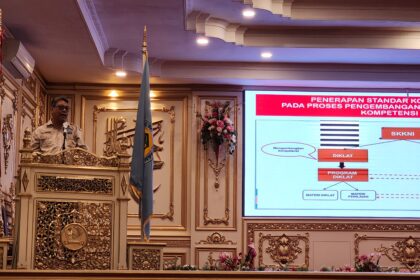[ad_1]
While BMW is investing heavily in electric vehicle (EV) technology it isn’t putting all its zero emission eggs in just the one basket.
According to media reports, the German auto giant plans to pilot a small series of BMW i Hydrogen NEXT fuel cell vehicles in 2022, based on the manufacturer’s current BMW X5.
A powertrain utilizing hydrogen fuel cell technology has a distinct advantage over battery electric equivalents in that fuel cells can provide much greater range before needing to be topped up. And refuelling only takes three to four minutes.
It is also completely zero emission because it generates power through a chemical reaction between the hydrogen and oxygen drawn from the ambient air. The end product is simply water vapour.
The company has trialled hydrogen as a power source since 1979, and drawing on experience from BMW’s fifth generation of e-drives, the vehicle will be equipped with an advanced hydrogen fuel cell e-drive system.
The company’s Lightweight Construction and Technology Centre (LuTZ) in Landshut will produce components needed for the hydrogen-electric drivetrain.
The facility will manufacture stack housings from light metal to hold the fuel cells, and a media end plate from plastic and light metal castings to create a weathertight seal around the stack housing.
In this instance, “media†refers to the hydrogen, oxygen and coolant that are sent into the housing via the media end plate to start a chemical reaction within the fuel cells.
All of these products have been specifically designed to withstand prolonged contact with hydrogen. The components will then be sent to Munich for installation in the fuel cell system.
The fuel cell system of the BMW i Hydrogen NEXT is fed with hydrogen from CFRP (carbon fiber reinforced plastic) tanks and can generate up to 125kW of electrical power for the electric motor, which is mounted on the rear axle.
The two 700-bar tanks hold a total of 6kg hydrogen. They help to provide an extended range for the vehicle in all weather conditions and can be refilled in just three to four minutes.
The electric motor in the pilot hydrogen vehicle is the same fifth-generation e-drive used for the BMW iX3.
The high-voltage battery that sits above the e-drive serves as an energy buffer and provides additional power under acceleration. The drivetrain system delivers a total output of 275kW (379PS).
“Having the Lightweight Construction and Technology Centre here at the site gives us a real advantage over our competitors,†commented Wolfgang Blümlhuber, head of technology driving dynamics, light metal casting in the purchasing and supplier network at BMW.
“We have innovative capabilities and industrialization expertise; we are able to develop strategically crucial innovations ourselves and, at the same time, we can reliably assess external partners and suppliers.â€
The BMW Group views hydrogen vehicles as best-suited for customers who frequently drive long distances, require a great deal of flexibility or do not have regular access to electric charging infrastructure.Â
Depending on the global market conditions and requirements, a customer offering will be brought to market in the second half of this decade.
In Germany, the European Union and other major regions of the world, lawmakers have recognised the significance of green hydrogen for the energy system of the future.
The European Union has made hydrogen technology a focal point with the “Green Deal.â€
Major Asian markets, such as Japan, Korea and China, have expressed a strong interest in establishing infrastructure for hydrogen vehicles.
The conditions for hydrogen fuel cell vehicles will develop differently around the world, BMW said.
Sources: EngineTechnologyInternational.com, PocketLint.com, BMWblog.com, GreenCarCongress
[ad_2]
Source link










